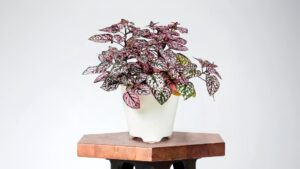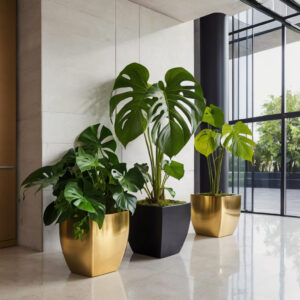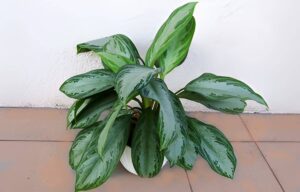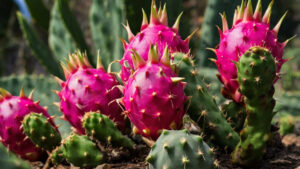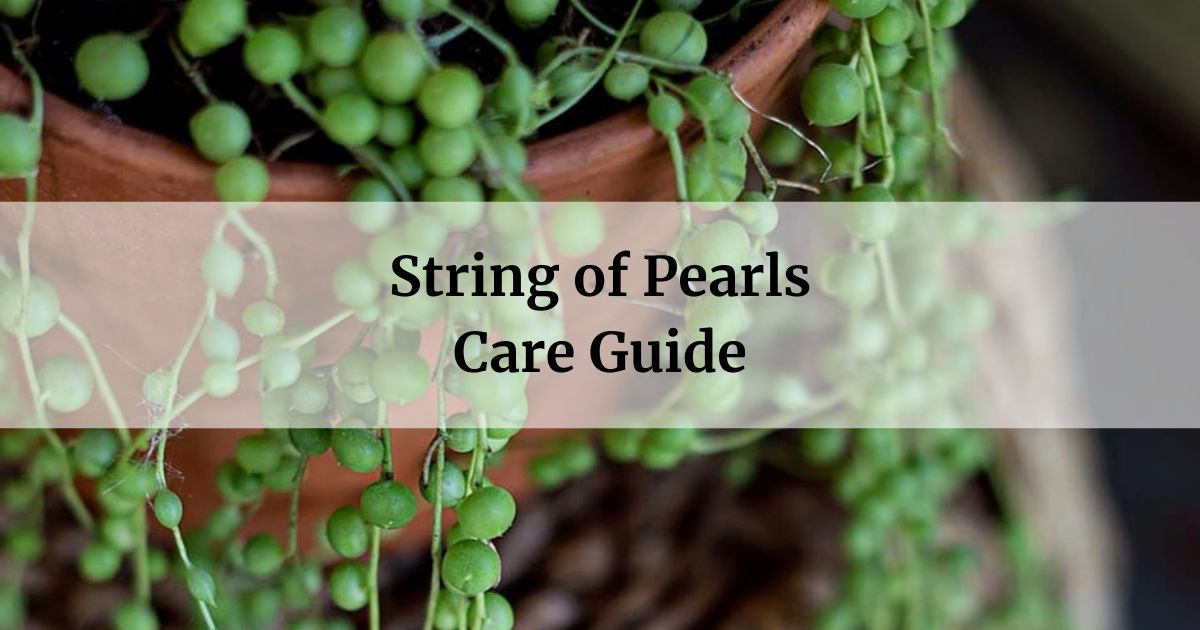
Senecio rowleyanus, commonly called String of Pearls, is one of the most popular hanging basket plants around. Its delicate strands of spherical green “pearl” beads dangling over the edge of pots adds such a unique visual impact.
I’ve had my String of Pearls for over 3 years now and am always impressed by how full and lush it gets with very little care from me. Its ability to trail endlessly while enduring occasional neglect makes it a great choice for anyone.
- Pros
- Unique pea-like round shaped leaves
- Drooping cascading growth habit
- Extremely easy to care for
- Tolerates low watering
- Adds instant visual appeal
- Cons
- Prone to leaf drop if underwatered
- Toxic to pets and livestock if ingested
In this article
Appearance of the String of Pearls
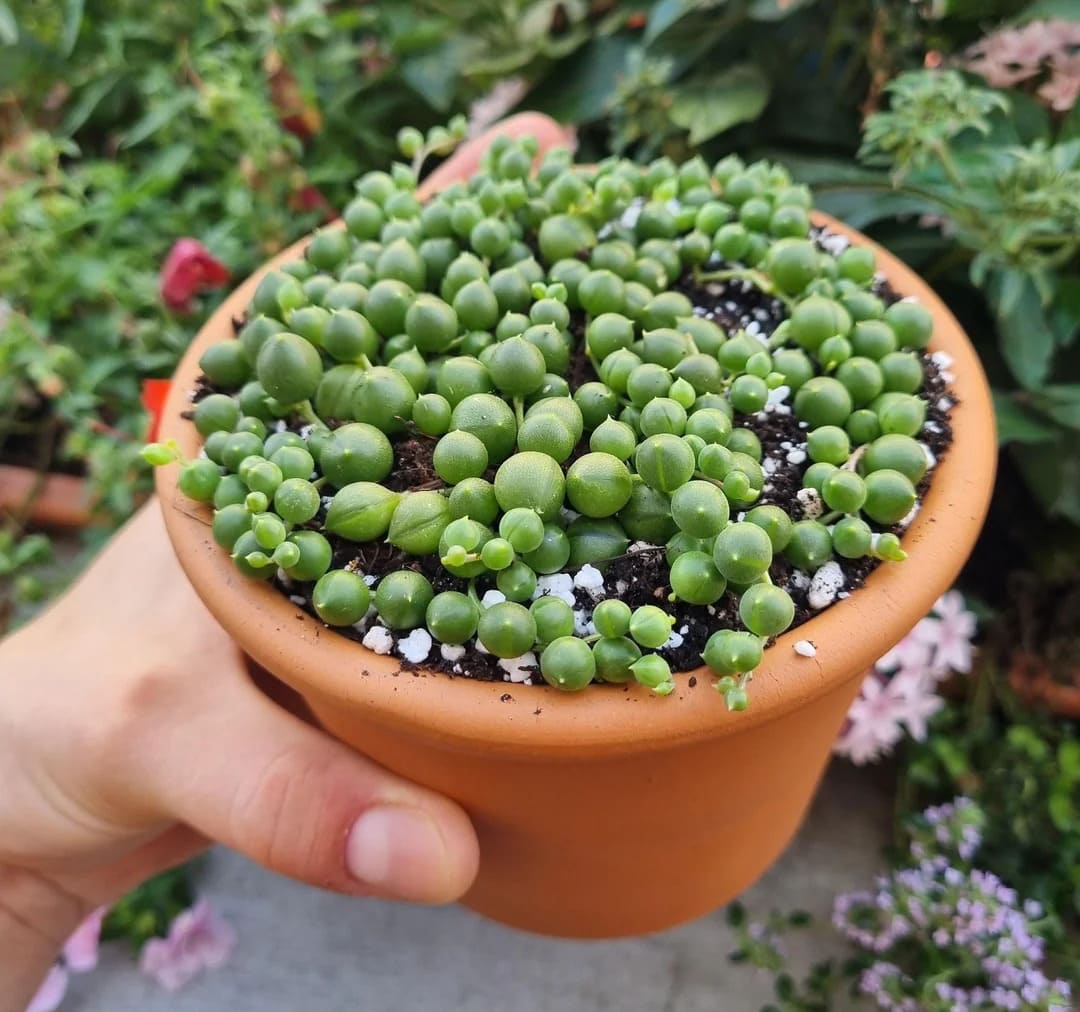
As the name suggests, the String of Pearls plant features cylindrical or rounded bead-like leaves along trailing stems. Individual leaves measure only about 1/4-1/2 inch wide and are stacked so tightly together they appear to be on a string. The leaves can be green, blue, silver or variegated shades.
This plant has an amazing ability to cascade freely over the edges of any container, pot or hanging basket. Full mature strands can reach 3-4 feet in length making it a showstopper.
Great for People who:
Want an easy pet-friendly plant to liven up their space. Its whimsical appearance adds visual interest without effort.
Great for these Spaces:
Hanging baskets, shelving, or trailing out of a container on a table. It looks amazing draping down from heights.
Caring for the String of Pearls
String of Pearls care truly could not be simpler. Water just enough to keep the pearls plump and hydrated, about once every 2-3 weeks. Too frequent watering can cause rot. Allow the top inch of soil to dry in between waterings.
It can tolerate low humidity and withstands temperature between 60 to 85 degrees F. Just be sure not to overwater and you’ll be successful with this unique trailing plant.
Toxicity Level of the String of Pearls
All parts of this plant are toxic to pets and livestock if ingested. Symptoms can include vomiting, drooling, diarrhea and potentially organ damage in severe cases. Keep it well out of reach of curious animals.
Light Requirements for the String of Pearls
String of Pearls thrive in medium to bright indirect light. Direct sun can cause scorching.
| Light Conditions | Effect on String of Pearls |
|---|---|
| Bright Indirect Light | Ideal, pearls remain plump and colorful |
| Low Light | Will survive but growth may be sparse |
| Direct Sunlight | Leaves prone to burning—avoid exposure |
An east or west window is a great spot. Rotate occasionally for balanced growth.
Watering the String of Pearls
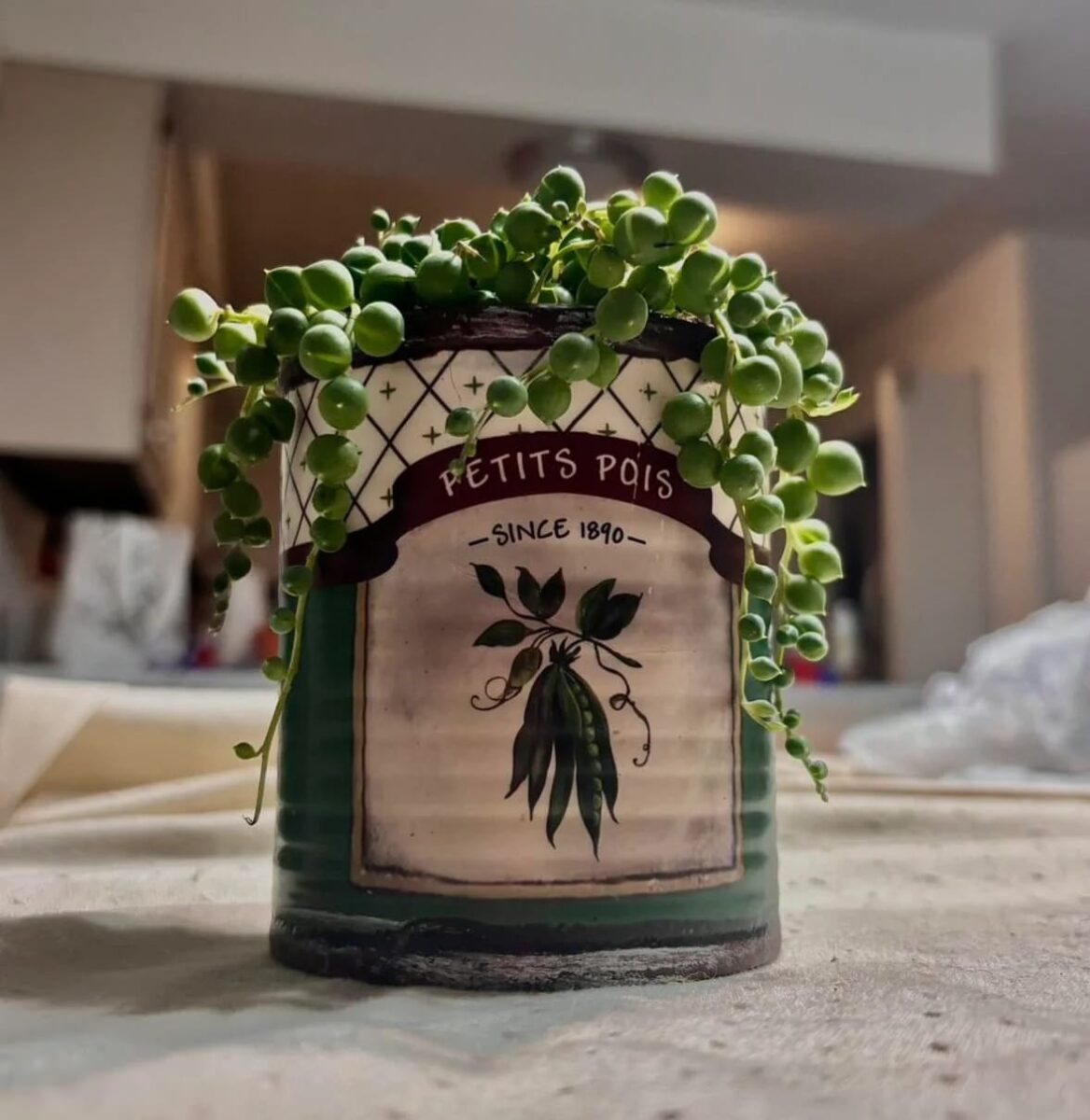
- Water sparingly, about every 2-3 weeks or when the pearls appear deflated and wrinkled.
- Use room temperature water and avoid soggy soil which can cause rot.
- Allow soil to become dry between waterings, this builds character.
- The pearls will become noticeably shriveled when thirsty, plumping back within hours of watering.
Fertilizing the String of Pearls
String of Pearls are quite resilient and may not even need fertilizer, especially if repotted annually. If the plant is not thriving, incorporate a diluted liquid fertilizer once every 2-3 months during spring and summer. Dilute to 1⁄4 – 1⁄2 strength.
Potting the String of Pearls
Repot annually in spring using a well-draining soil-less potting media. Gently remove from nursery pot being careful of the delicate stems. Secure the base in the new container and guide stems over the edge. Water sparingly.
Propagation of the String of Pearls
String of Pearls readily propagate from stem cuttings. Simply place a 5–6 inch cutting with 3-4 pearl beads water in a clear jar or container to allow roots to develop over 4-6 weeks. Once rooted, pot up in well-draining soil and care for as the parent plant.
Growth and Development
With its minimal needs, String of Pearls grows slowly throughout the year. Trim stems periodically to encourage bushier growth. Ensure the potting mix dries slightly between waterings. Move to indirect light if growth becomes leggy. Space looks magical adornede with full dangling strings.
Managing Pests and Diseases
Mealybugs occasionally bother String of Pearls. Check leaves for signs of fuzzy white insects. Thoroughly rinse plants and apply neem or insecticidal soap treatment. Provide good drainage, air flow and sanitize pruners between trimmings to deter any issues.
Complimentary Plants
- Pothos
- Philodendron
- Spider plant
- Wandering Jew
- Swedish Ivy
Frequently asked questions
Can String of Pearls tolerate lower light?
It will survive in lower light but may lose some of its trailing form. Rotate for even growth.
Can I grow String of Pearls outdoors in summer?
It can be acclimated to tolerate full shade or morning sun outdoors in mid-summer, but keep an eye out for pests and damage.
With its easy care and cascading beauty, String of Pearls adds charm to any space. My plant continues blooming thanks to its unbelievable resilience in drought-like conditions. I highly recommend this whimsical pearlescent trail for brightening up your home décor naturally.


